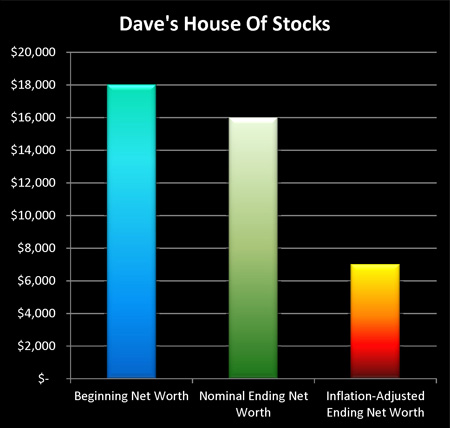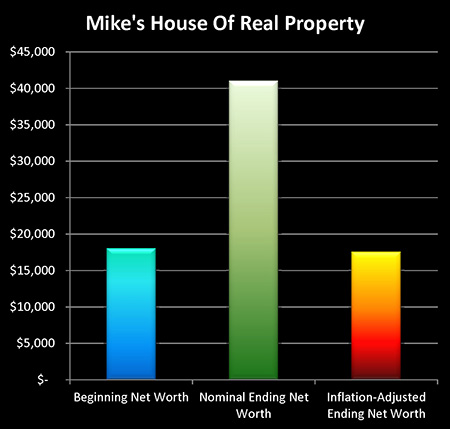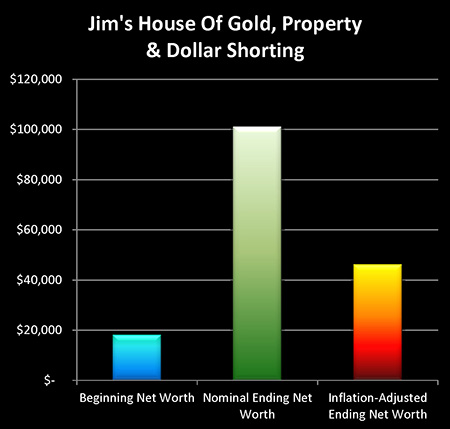The Great Game, Gold Arbitrage & Three Little Pigs
Commodities / Gold and Silver 2012 Sep 27, 2012 - 02:45 AM GMTBy: Dan_Amerman
 The Great Game
The Great Game
An astute reader from Atlanta named Ken wrote the following in a letter to me:
"It seems that the game plan (for financial heavyweights) is to buy assets, real things that can't be papered away by the government, and pay back with depreciated dollars."
Ken gets it. Ken understands the Great Game as it is being played at the highest levels of our monetary system. The Game has two halves: going long the real, and short the symbol. That is, going long real assets by owning them, and going short the dollar and the financial system by selective and advantageous borrowing. That way if you are a hedge fund manager, CEO or “private equity” investor who has essentially gambled the world monetary system on your speculations, and you collapse the financial markets and the value of the dollar when you guess wrong – you don’t jump out the office window. Instead, you enjoy an extraordinarily lucrative early retirement.
That's because you still own the real – and the destruction of the value of the dollar just means that you no longer have to pay back most of what you borrowed to buy the real (in inflation-adjusted terms).
As an example, a financial “heavyweight” borrows $1 billion to buy $1 billion in real assets. If asset inflation in real terms occurs and the asset climbs to $1.5 billion, he can then sell the asset, pay off the $1 billion loan, and walk away with half a billion.
If the credit bubble he used to buy the asset unwinds and destroys 80% of the value of the dollar in the process -- no problem! The price of his real asset climbs with inflation, so it is now worth $5 billion in future dollars, even while he still only owes $1 billion.
So he sells the asset, pays off the borrowing, and walks away with $4 billion as a reward for his contribution to the credit bubble. In inflation-adjusted terms: the asset maintains its value at $1 billion, inflation shreds 80% of the value of the $1 billion loan, knocking it down to $200 million, and thereby creates $800 million in equity in real terms. There are a number of simplifications in this example, but that is the essence of the Great Game.
The question then is – what is your personal reaction to this scenario? One response is to loudly and frequently express outrage that this situation is allowed to exist. That is a most justifiable response.
Another response is to take your piggy bank and try to hide it somewhere where it won't be destroyed by the games other people are playing. That is a most understandable response.
Still another response is to say: "I wish this weren't happening, but it is, so how do I personally profit from it?” That is the most advantageous response.
THE THREE LITTLE PIGS
That "personal profit" part likely sounds pretty good. But, if we personally don't have the millions and billions to directly access the capital markets and play the Great Game – how can we participate in the profits? To find an answer, we are going to travel back in time, re-examine an old children's story, and explore the little-known key to how millions of households successfully turned inflation into net worth. The time we will travel back to is the last time inflation raged out of control in the United States, when the dollar lost 57% of its value between 1972 and 1982.
The children's story is The Three Little Pigs, with the big bad Wolf being played by Inflation. Playing the roles of The Three Little Pigs are three brothers: Dave, Mike, and Jim. Each brother accurately sees the Wolf of Inflation on the way, and each tries to protect himself by building a different kind of financial "house". That is our first variant on the children’s story; we are going to ignore the millions of households who don’t believe the Wolf is coming, and who thus lose their savings portfolios of straw and wood as a result. Instead, we will concentrate on historical brick-house performance.
The three brothers each inherited $9,000 in 1972. Each had already taken out a mortgage to buy a home in 1969. There had already been some inflation, and the value of each house by June of 1972 was up to an exactly average (rounded national median value) of $18,000, with a $9,000 mortgage outstanding. So the story begins with each brother having $9,000 in cash, a $9,000 mortgage and $9,000 in home equity.
DAVE AND HIS HOUSE OF STOCKS
Brother Dave was a well read and educated kind of guy, and being financially sophisticated when it comes to conventional financial planning principles, he knew that common stocks were not only the key to long term wealth, but were an excellent hedge against inflation. So our first Little Pig sold his house, got his $9,000 in equity, and combined it with his $9,000 inheritance to buy $18,000 in stocks.
As a sophisticated conventional investor, Dave knew better than to try to beat the market, so he instead bought a well-diversified basket of common stocks, one that precisely tracked the performance of the Dow Jones Industrial Average. The Dow was at 929 in June, 1972, but after ten years of inflation averaging 8.73% -- it was at 812 in June of 1982. This meant that the value of Dave’s portfolio had fallen from $18,000 down to $16,000, a loss of 13% over the ten years (the more precise value would be $15,733, but we are generally rounding to the nearest thousand).
Dave was disappointed to see that his stocks had not done as well in fighting inflation as the finance professors had indicated they would, even in nominal terms. However, Dave was downright horrified when he remembered to do what the newspapers so often forget, and converted his stock price performance to real dollar (inflation-adjusted) terms.
By 1982, after ten years of inflation, the dollar was only worth 43 cents in terms of 1972 dollars. So when Dave took his $16,000 ending value in 1982, and converted it to constant 1972 dollars, he found that his ending stock value was only $7,000. In real terms, Dave had managed to lose $11,000 of his $18,000 starting investment – meaning a real loss of 62% – by relying on common stocks to beat inflation.

(The percentages are based on the actual numbers, not rounded to the nearest thousand. The cost of housing for Dave for ten years, along with the receipt and reinvestment of stock dividends are two of the many items left out of this simple educational illustration.)
MIKE AND HIS HOUSE OF REAL PROPERTY
Brother Mike was a cautious kind of guy who didn’t believe in either the stock market or being in debt, but did believe in the value of real property in times of inflation. So our second Little Pig took his $9,000 inheritance, paid off his mortgage, was now debt-free, and hunkered down in his $18,000 house to await the storm. The Wolf of Inflation blew hard and battered the dollar, the economy, the markets and personal savings for ten long years – and by June of 1982, Mike’s house was now worth $41,000, again the exact national average. So, Mike made an apparent profit of $23,000, or 125%.
Mike felt pretty good about how his house withstood the ravages of inflation. Until he ran the numbers and took into account that a 1982 dollar was only worth 43 cents in 1972 dollar terms. Adjusting for inflation, Mike’s $41,000 house was only worth about 17,500 in 1972 dollars – he had lost $500 (or 2.5%) in real terms over the ten years.

Now, this is not to say that Mike did poorly. He almost maintained the real value of his investment during the most powerful bout of inflation in recent American history, and unlike his two brothers, he did have a place to live for ten years without making mortgage or rent payments, which freed up money that he could have then used for investing. But owning the house itself on a debt-free basis did not directly make him money in inflation-adjusted terms.
JIM AND HIS HOUSE OF GOLD, PROPERTY & DOLLAR-SHORTING
Brother Jim liked gold for fighting inflation, and he liked real estate too. Our third Little Pig wasn’t thrilled with debt either, but he did have a bit of a brainstorm. “Jimbo,” he thought to himself, “if I am convinced that the value of the dollar is going to be plunging – why should I pay off my debts now, when the dollar is expensive, when I could wait and pay off my debts when a dollar is cheap?” So, Jim chose not to pay off his mortgage, but instead refinanced it up to $14,400, using a 30-year fixed-rate mortgage, which brought it up to an 80% loan-to-value. He then took the $5,400 he pulled out of his house equity, added in the $9,000 he inherited, and used the combined $14,400 to buy 232 ounces of gold, at the then-current price of about $62 an ounce. (The price is as of June, 1972, to keep comparability with the housing and inflation numbers. Gold did not become legal for individual Americans to own for investment purposes until January 1, 1975, but we’re treating it as if they could, to properly capture the inflationary period over the full ten years.)
So Brother Jim had a starting position in 1972 of owning an $18,000 house, owning $14,400 in gold, and owing $14,400 in a long-term and fixed rate mortgage. The Wolf of Inflation huffed, and puffed and blew hard for ten years, and three major financial changes worked together to dramatically change Jim’s net worth by June of 1982. The first change was that just like Brother Mike, the value of his house had climbed to a nationally average price of $41,000. This meant that it did not quite keep up with inflation, but lost about $500 in real terms.
The second financial change was that owning gold grew quite popular after ten years of sustained high inflation, and by June of 1982, gold was up to about $315 an ounce. This meant that Jim’s 232 ounces were worth about $73,000, which is a nominal profit of $59,000, or about 407%. When Jim adjusted for inflation, he was much happier than Mike, for even after discounting 57% for the decline in the dollar, Jim’s initial $14,400 had turned into $32,000 for a profit of 120% in real terms.
The third financial change was that unlike Mike or Dave, Jim had borrowed the equivalent of 80% of his net worth in a fixed-rate mortgage, that effectively constituted a long-term, tax-advantaged and relatively low-cost short on the value of the dollar. By 1982, inflation had shredded 75% of the value of that mortgage, including both the depreciation in the value of a dollar, and the value of having a long term loan locked in at a far below-market rate. So Jim’s debt had fallen from $14,400 down to $3,000 in real terms.
JIM’S WEALTH & ITS SOURCES
Adding it all up, Jim’s net worth in nominal terms went in ten years from $18,000 to $101,000, when we add the $73,000 in gold to the $41,000 in house value, and then subtract the $13,000 in remaining mortgage outstanding. When we look in nominal dollar terms, it appears that Jim made his money in gold and housing, while the mortgage paid down a bit. However, when we adjust all three factors into real dollar terms, we see that:
Jim made about $17,500 on his gold investment (1972 dollars)
Jim lost about $500 on the value of his house
Jim made about $11,000 through inflation shredding the value of his mortgage (and a bit of mortgage amortization)
When we add these up, we find that Jim’s net worth had climbed from $18,000 up to about $46,000 in real terms, giving him an inflation-adjusted total return of about $28,000 (155%) over the ten years of sustained inflation. Jim simultaneously went long the real and short the symbol, and when the symbol (the dollar) then had a loss of confidence and plunged in value – Jim’s net worth soared as a direct result.

While the first Little Pig lost 62% of his net worth investing in common stocks in inflationary times, and the second Little Pig lost 2.5% in real terms through owning real estate – our third Little Pig turned those problems into a 461% nominal profit, and a 155% real dollar profit. As an individual of quite limited resources, Jim played the Great Game and played it well.
Daniel R. Amerman, CFA
Website: http://danielamerman.com/
E-mail: mail@the-great-retirement-experiment.com
Daniel R. Amerman, Chartered Financial Analyst with MBA and BSBA degrees in finance, is a former investment banker who developed sophisticated new financial products for institutional investors (in the 1980s), and was the author of McGraw-Hill's lead reference book on mortgage derivatives in the mid-1990s. An outspoken critic of the conventional wisdom about long-term investing and retirement planning, Mr. Amerman has spent more than a decade creating a radically different set of individual investor solutions designed to prosper in an environment of economic turmoil, broken government promises, repressive government taxation and collapsing conventional retirement portfolios
© 2012 Copyright Dan Amerman - All Rights Reserved
Disclaimer: This article contains the ideas and opinions of the author. It is a conceptual exploration of financial and general economic principles. As with any financial discussion of the future, there cannot be any absolute certainty. What this article does not contain is specific investment, legal, tax or any other form of professional advice. If specific advice is needed, it should be sought from an appropriate professional. Any liability, responsibility or warranty for the results of the application of principles contained in the article, website, readings, videos, DVDs, books and related materials, either directly or indirectly, are expressly disclaimed by the author.
© 2005-2022 http://www.MarketOracle.co.uk - The Market Oracle is a FREE Daily Financial Markets Analysis & Forecasting online publication.



